Recipe for: Chinese Eggplants with Minced Pork
-Recipe Content-
Description
Chinese eggplants with minced pork (肉末烧茄子)
and spicy garlic sauce is a humble and popular dish in Chinese kitchens.
A small amount of minced pork can significantly improve eggplants's taste,
enriching the layers of a humble eggplant stir-fry.
For vegan readers, you can skip minced pork or try this eggplant with garlic sauce.
Prep time: 15 minutes
Cook time: 10 minutes
Servings: 2
How to make eggplants turn soft?
Though eggplants can be extremely delicious, they are not liked by every housewife cook as they are hard to handle and need lots of oil.
I have been trying to search for ways to reduce the oil absorbed by eggplants.
The final solution is to soak the eggplants in slightly salty water and let them absorb the water as much as possible.
The water contained in the eggplants can help to accelerate the cooking process and make the eggplants much softer.
Eggplants are quite yummy when well cooked.
The soft texture can greatly absorb the spicy garlic sauce and endow the dish with great flavor.
What to serve with?
This is a savory dish and you can match it with a light Chineses style soup like winter melon soup, lotus root soup, and even egg drop soup.
Besides, I highly recommend matching it with Chinese cucumber salad and steamed rice.
Ingredients
1/2 tbsp. Doubanjiang: Doubanjiang is also named broad bean paste, a spicy chili sauce from Sichuan cuisine,
made from broad beans. It has a lovely spicy flavor that combines well with most Chinese dishes.
If you don't have doubanjiang, you can use other chili paste to replace it.
1/4 cup Minced pork: Minced pork is used in a very small amount. We need to fry minced pork until crispy and aromatic.
The aroma of the minced pork can improve the taste of the dish greatly even with a very small portion.
2 Garlic cloves, 1 thumb Ginger, 2 Green onion: to create a basic savory base for braised eggplants.
1 tbsp. Light Soy Sauce: to provide a basic savory taste.
3 tbsp. Cooking Oil
1/8 tsp. Salt and Sugar
1/2 tsp Sesame Oil
1/2 tbsp. Chinese cooking wine
2 Long Asian Eggplants
Instructions
1. Remove the ends of Asian eggplants and then cut them into small cubes (for the best flavor, try to cut each cube with some skin).
Transfer them into a large pot filled with water, add a pinch of salt, and soak for 10 minutes.
Add a weight if necessary to make sure the eggplants is well soaked. Set aside to drain completely.
2. Heat 2 tablespoons of oil in a wok and fry the eggplants for 6-9 minutes until the eggplants become soft and withered.
Transfer the eggplants out and leave the oil in.
3. Add marinated pork to stir-fry until aromatic and slightly golden brown.
Transfer to the edges of the wok and place the doubanjiang in to fry for another 1 minute. Slow down the fire.
4. Add garlic, ginger and scallion onion until aromatic.
5. Return the eggplants into the pot along with fried minced pork, soy sauce, sugar and sesame oil.
Mix well. Serve with chopped green onion garnished.
Source Attribution:
China Sichuan Food's recipe for chinese eggplants with minced pork
-Sample Imagery-
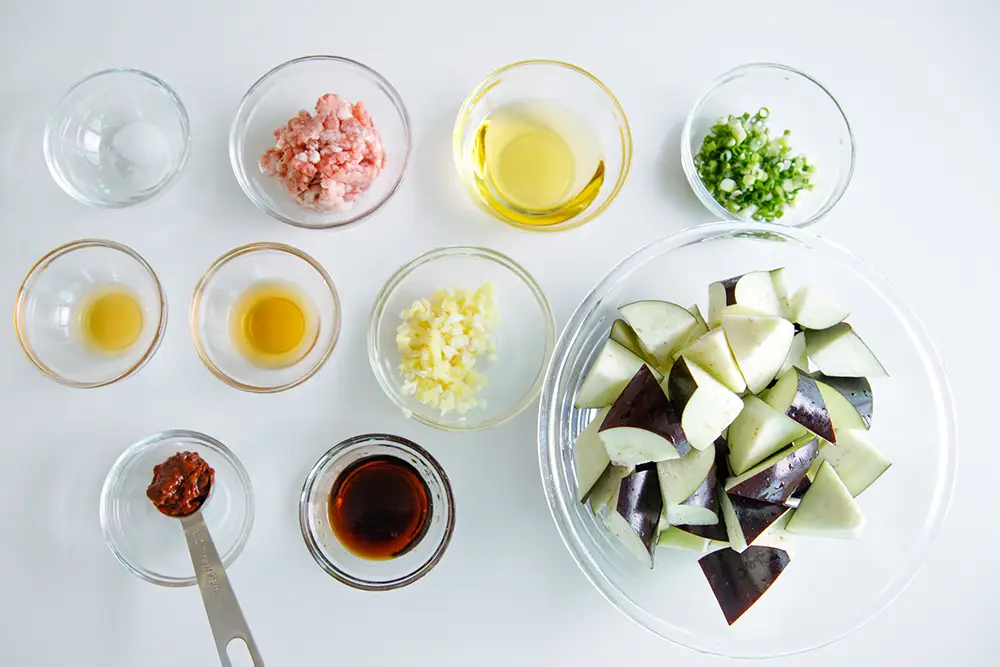
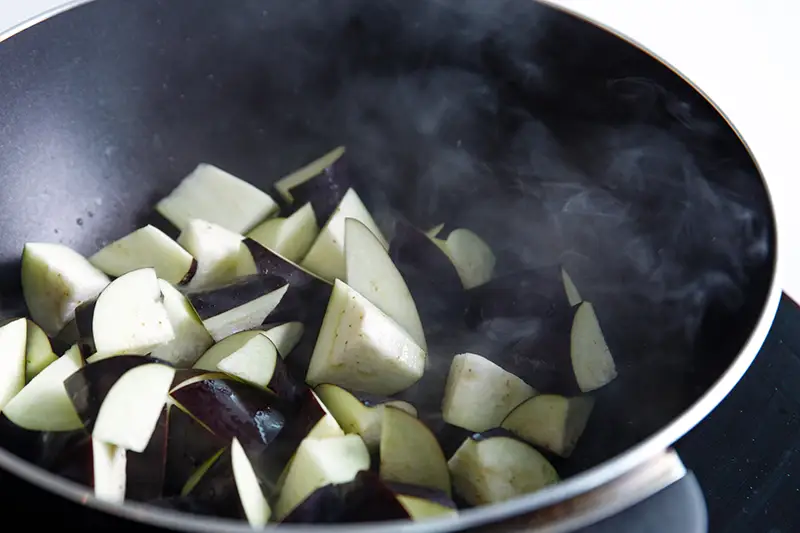
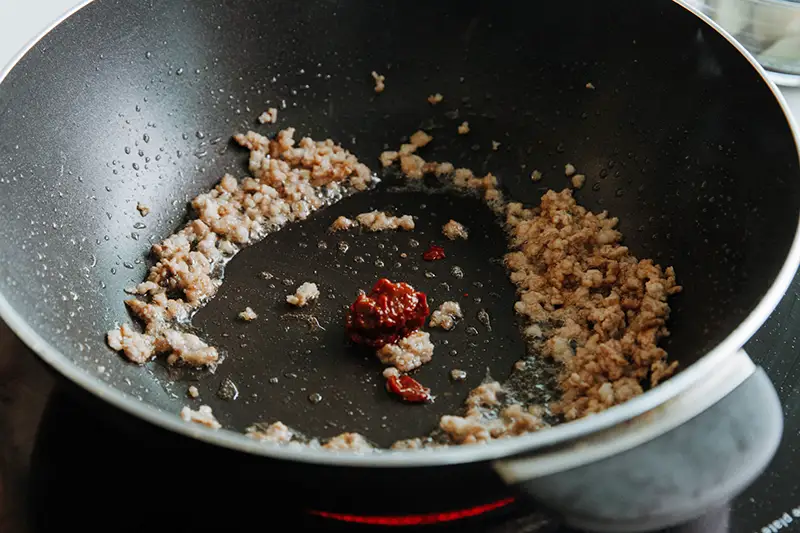
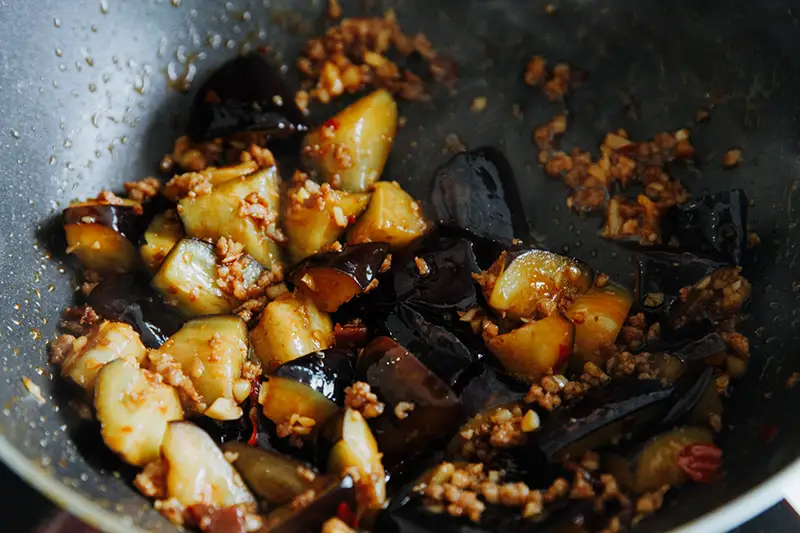
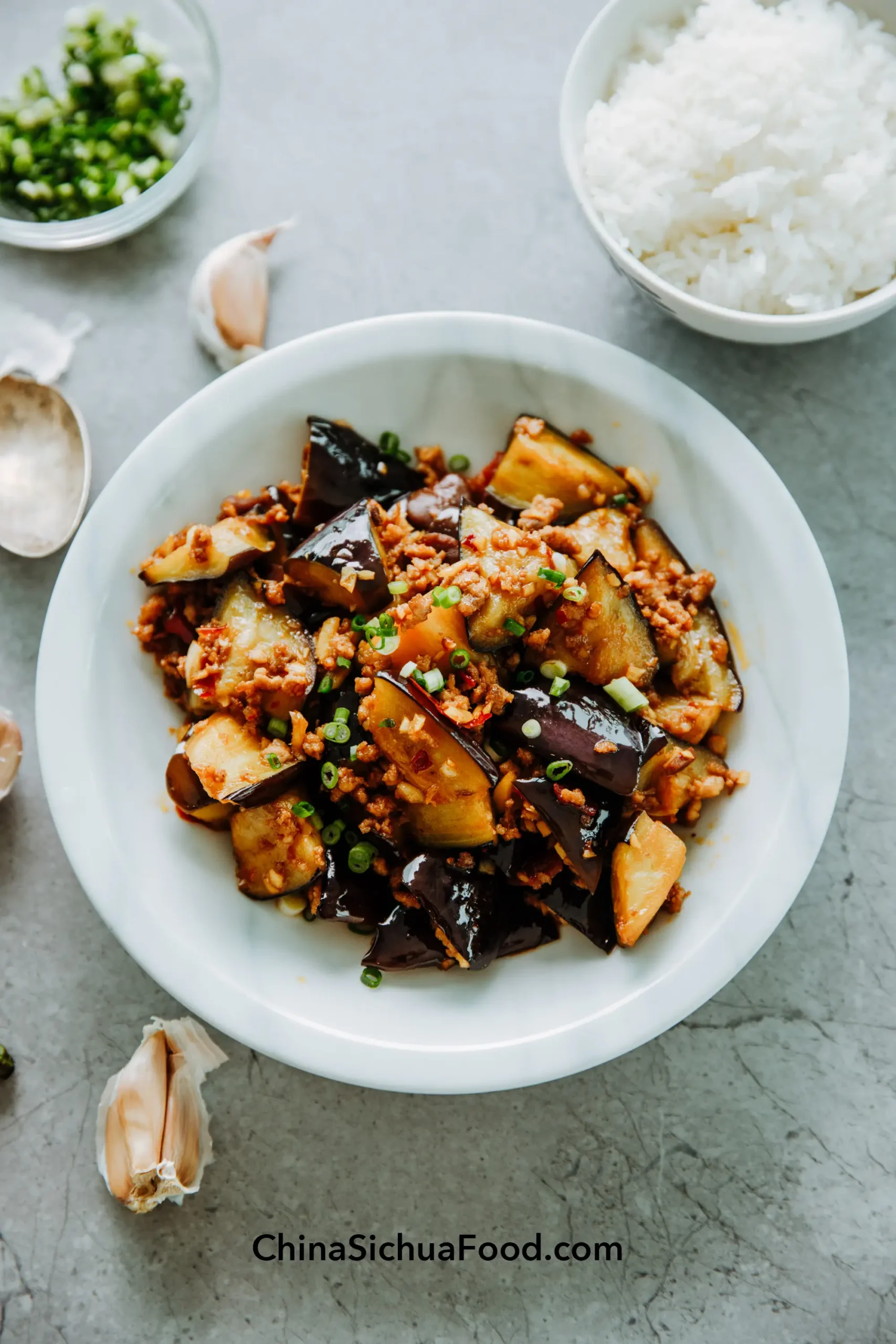

-Reference: Recipe Websites-
1. Taste of Home's recipe for plum poppy seed cake: Something about this website that works well
is that, apart from the usual contents one would find in a recipe page, at the bottom of each page there is
a recipe card that summarizes all the ingredients/instructions/nutrition information for those who have reviewed the detailed explanations listed above the card,
or those who knew how to make the dish already but wanted a reminder. Furthermore, this recipe card is accessible from the top of the page through a button, which is user-friendly because
users who want to view the recipe card won't need to scroll down the page. I think it'd be even more helpful if the recipe card is located in a more prominent spot or in a pop up box.
2. Delish's recipe for pumpkin chocolate chip cookies: I think
information structure is organized well on this site. Some small but important information (such as amount yielded, prep time, total time, and nutritional information) are made clear immediately after the image of the food.
Putting a box around these information highlights them to the users well. On the home page of the site, the grid structure and consistency of image styles and text treatment makes it very clean and easy to navigate.
3. Jo Cooks' recipe for roast beef: This recipe page uses interactive elements such as links(jump tos) and buttons well. A user who is cooking
while looking at this website can click on the buttons on the ingredients list to check off ingredients that they have gathered. This makes it clear what ingredients are still needed to start making the dish.
Apart from interactive elements, the use of icons makes a clear organization of information. Each section is further divided by numbered icons to show the different steps within the section.
-Reference: Non-recipe Websites-
1. Notion's home page: I think notion's webpage layout is really successful in organizing its contents and functions.
The use of the grid structure makes all the different contents cohesive on a single page.
Also, with a navigation bar always attached to the left, users can easly navigate from one section or tab to another without having to scroll up.
This can potentially be used for a recipe page where users need to scroll through different recipes to make a decision. A navigation bar for finding specific parts of the recipe might be useful.
2. WikiHow's content page: Since most of WikiHow's contents are broken down into steps, its organization of information can be a potential reference.
Each step includes a title, an image, and a description of paragraph structure or bullet points. Such consistency in style can be helpful in organizing a contentful recipe page.
3. Threadable's website: Threadable's website has a very simple color palette because its contents (books) are of main focus.
I think having the navigation bar to the left and aligned vertical works well on this website because the middle section is dominated by the text that the user is reading, so attaching a navigation bar to the top might disrupt the reading experience.
The layout of the content pages being broken into sections is a potential inspiration for recipe sidenotes such as user-comments or author's notes.





